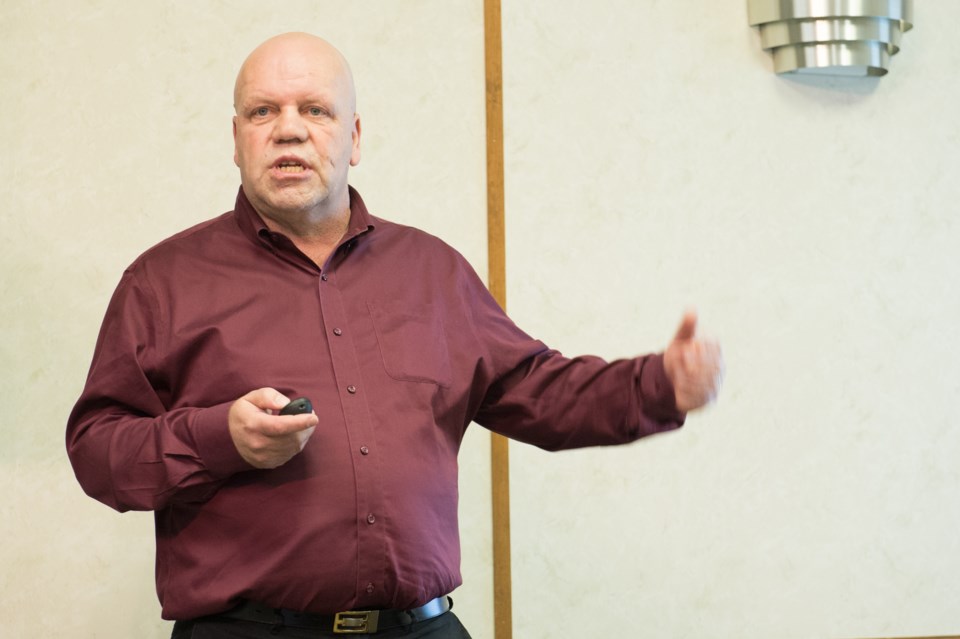Estevan– Enform Saskatchewan criss-crossed the province in mid-October, presenting another series of lunch and learn sessions.
The presentations took place in Weyburn on Oct. 13, Estevan Oct. 14, Carlyle Oct, 15, Swift Current Oct. 19, Kindersley Oct. 20 and finally Lloydminster on Oct. 21.
In Estevan, Arnold Betzema touched on “Young Workers, the New Workforce.”
He pointed out that 15 per cent of companies’ workforces are young workers, ages 15 to 24, but 74 per cent of Canadian employers surveyed didn’t have existing safety programs and/or training for younger workers.
According to Saskatchewan’s Workers Compensation Board, approximately 6,000 people under the age of 25 are injured on the job in Saskatchewan each year. Of those, there are approximately 2,750 hands cut, struck or burned every year; 1,00 back injuries, 900 legs sprained, strained or broken; 650 arms cut, strained or sprained, 600 eyes injured by chips and splinters and three work-related deaths.
“Right now we have more seniors than youth,” Betzema said, adding for the first time in history, we’re now seeing four generations working side-by-side. But he questioned if the experience of older generations is being passed down to the young.
A “grey ceiling” can limit upward progress of young workers and lead to resentment.
Approximately 15 per cent of workers in their 40s and 50s are paying to support a grown child, Betzema pointed out.
“Freedom 55 is a fallacy, given today’s fluctuating markets. Older workers are in for the long haul.”
He added that 21 per cent of loss time injuries involve young workers.
To deal with this, the WCB will soon be releasing a new guide in conjunction with WorkSafe BC.
Supervisors have a direct, legislated duty and responsibility, Betzema said, adding job interview processes should have a health and safety component.
“Some existing workers may be setting a bad example. Give new hires detailed job descriptions, laying out specifics and expectations,” he said.
Other items employers can do is review their probationary guidelines and systems for corrective action.
In addition to young workers, new immigrants who may not have a strong command of English can be a concern, too.
“Yeah, yeah, I understand,” Betzema said may not actually be the case.
The current downturn in the oilpatch may be an opportunity to review internally the tools and systems in place for when hiring in place when the business rebounds.
With many workers leaving the oilpatch now due to lack of work, when things do pick up, Betzema said there will be a lot of new workers to the industry.
Additional sessions touched on workplace ergonomics and supervision.



